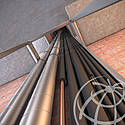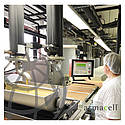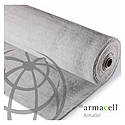Armacell Know-how
Insulation in hot applications
As operating temperature of piping systems in hot applications lie above ambient temperature, heat loss can result in unwanted cooling down of the transmitted media, increased room temperature in which the pipes are located, and higher energy use due to the need to maintain the required operating temperature. Insulation minimises unintentional temperature loss, and is a tried-and-tested means of enabling energy savings.
Also, government bodies around the world mandate workplace safety rules to ensure that employers provide their employees with a workplace free from recognised hazards likely to cause death or serious physical harm. Installing the right insulation is one of the easiest and cost-effective measures to meet such occupational safety and health directives.
Any process or jobsite that likely increases a worker‘s deep core temperature raises the risk of heat stress. Heat stress heightens stress and fatigue levels, and leads to serious health conditions for workers as well as higher incidents of workplace accidents. Insulation puts a barrier between the person and the hot equipment, preventing unwanted burns, and unintentional increases to the room temperature. When choosing the right insulation material, take note that the temperature range of an insulated system will limit the material options to be considered. In case of metal pipes, the metal temperature needs to be addressed. For example, if the operating temperature of the equipment is set at 100°C (212°F), the radiant tube temperature could reach over 120°C (250°F).
Choosing an insulation that handles temperatures only up to that of the equipment would not provide sufficient personnel protection. It could also result in heat loss.
Pipe brackets // Most are aware about the benefits of insulation, but they often overlook pipe brackets - especially in hot applications. To effectively prevent thermal bridging, a direct connection between the pipe and the fixing must be avoided. Load-bearing segments made of insulation materials with a high resistance to compression and low thermal conductivity must be inserted between the object and its fixing. The load-bearing segments must be at least as thick as the adjoining insulation layer. It is essential not to exceed the compressive strain of the insulation material which is permitted for permanent loads. Find out more about ArmaFix here.


